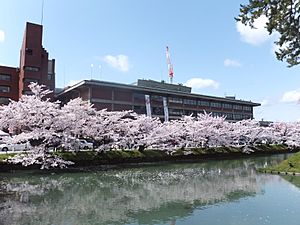Hirosaki facts for kids
Quick facts for kids
Hirosaki
弘前市
|
|||||||||||
|---|---|---|---|---|---|---|---|---|---|---|---|
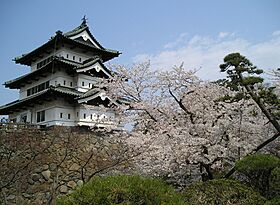 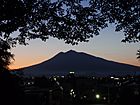 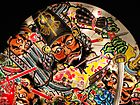 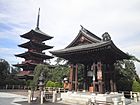 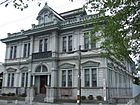 |
|||||||||||
| Hirosaki Castle and Sakura | |||||||||||
| Mount Iwaki | Hirosaki Neputa Festival | ||||||||||
| Saisho-in temple | former 59 Bank HQ | ||||||||||
|
|||||||||||
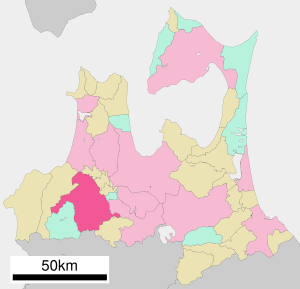 |
|||||||||||
| Country | |||||||||||
| Region | Tōhoku | ||||||||||
| Prefecture | Aomori | ||||||||||
| Area | |||||||||||
| • Total | 524.20 km2 (202.39 sq mi) | ||||||||||
| Population
(February 1, 2023)
|
|||||||||||
| • Total | 163,639 | ||||||||||
| • Density | 312.169/km2 (808.514/sq mi) | ||||||||||
| Time zone | UTC+9 (Japan Standard Time) | ||||||||||
| Phone number | 0172-35-1111 | ||||||||||
| Address | 1-1 Kamishirogane-machi, Hirosaki-shi, Aomori-ken 036-8551 | ||||||||||
| Climate | Cfa/Dfa | ||||||||||
|
|||||||||||
Hirosaki (弘前市, Hirosaki-shi) is a city in western Aomori Prefecture, Japan. It's a busy place with about 163,639 people living there as of February 2023. The city covers an area of about 524 square kilometers (202 square miles).
Hirosaki grew up around a castle town that was once ruled by the powerful Tsugaru clan. Today, it's a major business hub in the area. It's also famous for growing lots of apples, producing 20% of all apples in Japan! The city uses slogans like "Apple Colored Town Hirosaki" to show off its apple connection. You can also see many old Western-style buildings from the Meiji period here.
Contents
- Geography: Where is Hirosaki?
- Population: How Many People Live Here?
- City Symbol: What Does it Mean?
- History: A Look Back in Time
- Economy: What Does Hirosaki Produce?
- Education: Schools and Universities
- Transportation: Getting Around Hirosaki
- Sports and Culture: Fun Things to Do
- Local Attractions: Places to Visit
- Notable People from Hirosaki
- See also
Geography: Where is Hirosaki?
Hirosaki is located in the western part of Aomori Prefecture. It sits at the southern end of the Tsugaru plains. The city is southeast of Mount Iwaki and shares a border with Akita Prefecture.
Mountains and Rivers
The eastern and southern sides of Mount Iwaki, including its peak, are inside the city limits. The Iwaki River flows through the city from west to northeast.
Neighboring Towns and Cities
Hirosaki is surrounded by several other towns and cities.
- In Akita Prefecture: Ōdate
- In Aomori Prefecture:
- Ajigasawa
- Fujisaki
- Hirakawa
- Inakadate
- Itayanagi
- Nishimeya
- Ōwani
- Tsugaru
- Tsuruta
Climate: What's the Weather Like?
Hirosaki has a cold humid continental climate. This means it has warm, short summers and long, cold winters. There is usually a lot of snow in winter.
The average yearly temperature in Hirosaki is about 10.5 °C (50.9 °F). September is the wettest month, with an average rainfall of 1357 mm (53.4 inches) per year. The hottest month is August, with temperatures around 23.7 °C (74.7 °F). January is the coldest, with temperatures around -2.3 °C (27.9 °F).
Population: How Many People Live Here?
The number of people living in Hirosaki grew steadily until around the year 2000. Since then, the population has slowly decreased.
| Historical population | ||
|---|---|---|
| Year | Pop. | ±% p.a. |
| 1960 | 170,919 | — |
| 1970 | 174,644 | +0.22% |
| 1980 | 192,291 | +0.97% |
| 1990 | 191,217 | −0.06% |
| 2000 | 193,297 | +0.11% |
| 2010 | 183,473 | −0.52% |
| 2020 | 168,466 | −0.85% |
City Symbol: What Does it Mean?
Hirosaki's official symbol is a Buddhist manji. This symbol comes from the flag of the Tsugaru clan. They were the powerful lords (daimyō) who ruled the Hirosaki Domain during the Edo period.
History: A Look Back in Time
People have lived in the Hirosaki area for a very long time. Clay figures shaped like humans have been found here that are up to 12,000 years old. More figures from the Jōmon period and Yayoi period have also been discovered.
Early History and the Tsugaru Clan
During the Heian period, the area was part of the Northern Fujiwara lands. Later, in the early Kamakura period, it was given to the Nanbu clan.
In the Sengoku period, a local leader named Ōura Tamenobu decided to become independent in 1571. He took control of local castles. He later promised loyalty to Toyotomi Hideyoshi in 1590 and was given his lands officially. He then changed his name to "Tsugaru."
After supporting Tokugawa Ieyasu in the Battle of Sekigahara, Tsugaru Tamenobu was again confirmed as ruler of his lands. He started building a castle in Takaoka, which is now Hirosaki. This was the beginning of the Hirosaki Domain under the Tokugawa shogunate. His son, Tsugaru Nobuhira, finished the castle in 1611. However, its large 5-story main tower was destroyed by lightning in 1627.
Modern Hirosaki Begins
The Tsugaru clan supported the new government during the Boshin War in the Meiji Restoration. As a reward, they received more land. However, in 1871, the old feudal system was ended. Hirosaki Domain became Hirosaki Prefecture. Later that year, it was renamed Aomori Prefecture, and the capital moved to Aomori.
Many important things happened in Hirosaki during this time:
- On October 1, 1873, Chōyō Elementary School was opened.
- Apple farming began in Hirosaki in 1877.
- The 59th National Bank, which later became Aomori Bank, opened in March 1878.
- On April 1, 1889, Hirosaki officially became a city. It was one of the first 30 cities in Japan. At that time, it was the third largest city in the Tōhoku region.
- The Ōu Main Line railway connected Hirosaki with Aomori on December 1, 1894.
20th Century Developments
- In October 1898, Hirosaki became home to the Imperial Japanese Army's IJA 8th Division. This division played a big role in the Russo-Japanese War.
- Hirosaki City Hospital opened in 1901, and the Hirosaki City Library in 1906.
- The first telephone service in the city started in 1909.
- The first Cherry Blossom Festival was held in 1918.
- In 1927, the Kōnan Railway connected Hirosaki with Onoe.
- Hirosaki University was established in 1949.
City Expansion
Hirosaki grew larger by adding nearby villages:
- On March 1, 1955, it merged with Shimizu, Wattoku, Toyoda, Horikoshi, Chitose, Fujishiro, Niina, Funazawa, Takasugi, Susono, and Higashimeya.
- On September 1, 1957, Ishikawa Village was also added.
In 1979, the city was connected to the Tōhoku Expressway by a road called "Apple Road." On February 27, 2006, the old Hirosaki city, along with the town of Iwaki and the village of Sōma, merged to form the expanded city of Hirosaki we know today.
In 2012, Hirosaki started working with a French town called Beuvron-en-Auge. This partnership helps both places promote their economies and tourism, especially through products made from apples like cider and calvados brandy.
Economy: What Does Hirosaki Produce?
Hirosaki is the main business center for the southwest part of Aomori Prefecture. The most important crops grown here are apples and rice. Hirosaki is especially famous for its apples, producing about 20% of all apples in Japan.
Education: Schools and Universities
Hirosaki has many schools for students of all ages.
Colleges and Universities
- Hirosaki University
- Hirosaki Gakuin University
- Hirosaki University of Health and Welfare
- Hirosaki University of Heath and Welfare Junior College
- School of Allied Medical Sciences, Hirosaki University
- Tohoku Women's College
- Tohoku Women's Junior College
Elementary and High Schools
The city government runs 29 public elementary schools and 15 public junior high schools. There are also national and private schools. For high school, there are five public high schools run by Aomori Prefecture and four private high schools.
Public High Schools
- Hirosaki Chūō High School
- Hirosaki High School
- Hirosaki Minami High School
- Hirosaki Vocational High School
- Hirosaki Technical High School
Private High Schools
- Hirosaki Gakuin Seiai Middle and High School
- Hirosaki Higashi High School
- Shibata Girls' High School
- Tōōgijuku High School
Special Education Schools
Hirosaki also has four special education schools for students with disabilities. Three are run by Aomori Prefecture, and one by the national government.
Transportation: Getting Around Hirosaki
You can travel in and out of Hirosaki by train and car.
Railways
![]() East Japan Railway Company (JR East) – Ōu Main Line
East Japan Railway Company (JR East) – Ōu Main Line
- Ishikawa – Hirosaki – Naijōshi
![]() Kōnan Railway Company – Kōnan Line
Kōnan Railway Company – Kōnan Line
- Hirosaki – Hirosaki-Higashikōmae – Undōkōenmae – Nisato
![]() Kōnan Railway Company – Ōwani Line
Kōnan Railway Company – Ōwani Line
- Chūō-Hirosaki – Hirokōshita – Hirosaki Gakuindai-mae – Seiaichūkō-mae – Chitose – Koguriyama – Matsukitai – Tsugaru-Ōsawa – Gijukukōkōmae – Ishikawa – Ishikawa-Poolmae
Highways
 Tōhoku Expressway
Tōhoku Expressway National Route 7
National Route 7 National Route 102
National Route 102 National Route 339
National Route 339 National Route 394
National Route 394
Sports and Culture: Fun Things to Do
Hirosaki is known for its unique culture and exciting festivals.
Music
- Tsugaru-jamisen is a special and very skilled style of playing the Tsugaru-jamisen, a traditional Japanese instrument.
Sports Teams
- Blancdieu Hirosaki FC is the city's football (soccer) team.
Festivals: Celebrations in Hirosaki
Hirosaki hosts several popular festivals throughout the year:
- Hirosaki Neputa Festival: This festival happens during the first week of August. It's so special that it was named one of the 100 Soundscapes of Japan.
- Hirosaki Cherry Blossom Festival: Held in the park around Hirosaki Castle. About 2,600 Sakura (Japanese cherry) trees bloom during Japan's Golden Week holiday.
- Hirosaki Castle Chrysanthemum and Autumn Leaves Festival: This festival has been held every autumn since 1962. It celebrates the end of summer and the start of winter.
- Hirosaki Castle Snow Lantern Festival: First held in 1977, this festival attracts many visitors. In 1999, it had 165 large snow lanterns and 300 small kamakura snow caves.
Local Attractions: Places to Visit
Hirosaki has many interesting places to see:
- Chosho-ji
- Fujita Memorial Japanese Garden
- Hirosaki Castle
- Hirosaki Tōshō-gū
- Iwaki Kōgen Prefectural Natural Park
- Nakamachi Samurai Houses
- Narita Family Gardens, a National Place of Scenic Beauty
- Seishō-in
- Ōmori Katsuyama Site, a National Historic Site
- Tsushima Family Gardens, a National Place of Scenic Beauty
- Zuiraku-en, a National Place of Scenic Beauty
Notable People from Hirosaki
Many talented people come from Hirosaki:
- Hirofumi Arai, actor
- Tomoko Aran, pop singer and lyricist
- Grant Bogdanove, jujitsu wrestler
- Masakatsu Funaki, actor, mixed martial artist, and professional wrestler
- Hisashi Tonomura, musician
- Yōjirō Ishizaka, writer
- Ningen Isu 人間椅子(バンド), music band
- Wakanohana Kanji I, sumo wrestler
- Takanohana Kenshi, sumo wrestler
- Shunsuke Kikuchi, musician
- Norio Kudo, professional go player
- Mitsuyo Maeda, judo wrestler
- Juji Nakada, evangelist
- Yoshitomo Nara, modern artist
- Iwakiyama Ryūta, sumo wrestler
- Nui Sano, painter
- Takahiro Shimoyama, basketball player
- Wakanosato Shinobu, sumo wrestler
- Shūji Terayama, modern artist
See also
 In Spanish: Hirosaki para niños
In Spanish: Hirosaki para niños





